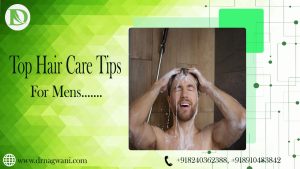Table of Contents
Introduction The Right Hair Care Routine
In the vast world of beauty and self-care, one aspect that often takes the center stage is hair care. A luscious mane not only enhances our physical appearance but also contributes significantly to our confidence and overall well-being. However, achieving and maintaining healthy hair requires more than just occasional washes and trims. In this comprehensive guide, we will delve into the essential components of the right hair care routine that your hair truly needs.
Understanding Your Hair:
Before diving into the specifics of a hair care routine, it’s crucial to understand your hair type. Different hair types have distinct needs, and tailoring your routine to your hair’s unique characteristics ensures optimal results. Common hair types include straight, wavy, curly, and coily, with variations in thickness, porosity, and texture.
Step 1: Cleansing – The Foundation of Healthy Hair
The foundation of any effective hair care routine is proper cleansing. Choosing the right shampoo for your hair type is paramount. For oily scalps, opt for a clarifying shampoo to remove excess oil, while those with dry scalps should lean towards moisturizing formulas. Use sulfate-free shampoos to maintain the natural oils on your scalp, preventing excessive dryness.
Frequency matters too. Over-washing can strip your hair of its natural oils, leading to dryness, while infrequent washing can result in product buildup. Striking the right balance is key; most experts recommend washing every 2-3 days, but this can vary based on your hair type and lifestyle.
Step 2: Conditioning – Nourishing Your Locks
Conditioning is the second pillar of a successful hair care routine. After cleansing, apply a conditioner suitable for your hair type. For fine hair, use a lightweight conditioner to avoid weighing down your strands. Thicker, coarser hair may benefit from a more intensive conditioning treatment.
Deep conditioning treatments, such as hair masks or oils, should be incorporated into your routine on a weekly or bi-weekly basis. These treatments provide additional nourishment, repair damage, and enhance the overall health of your hair.
Step 3: Moisturizing – Quenching Your Hair’s Thirst
Moisture is the elixir for healthy hair, and proper hydration prevents dryness and breakage. Depending on your hair type, choose a leave-in conditioner, hair oil, or a combination of both to maintain optimal moisture levels. Pay extra attention to the ends of your hair, as they tend to be more prone to dryness and split ends.
When applying moisturizing products, work them through your hair gently, ensuring even distribution. Regular moisturizing not only improves the texture of your hair but also enhances its natural shine.
Step 4: Protecting – Shielding Your Hair from Damage
Protecting your hair from external stressors is a crucial step in any hair care routine. Heat styling tools, UV rays, and harsh weather conditions can all contribute to damage. Minimize the use of hot styling tools, and when you do, always use a heat protectant spray to mitigate potential harm.
Wearing protective styles, such as braids or buns, can prevent mechanical damage and reduce exposure to environmental elements. Additionally, using a silk or satin pillowcase reduces friction, preventing breakage and minimizing frizz.
Step 5: Regular Trims – Pruning for Growth
While it might seem counterintuitive, getting regular trims is essential for maintaining healthy hair. Trimming removes split ends and prevents them from traveling up the hair shaft, leading to more significant damage. Aim for a trim every 6-8 weeks to promote healthier, more robust hair growth.
A hair care specialist, exemplified by Dr. Anand Kumar Nagwani with 25 years of experience, is crucial for an effective hair care routine. Their expertise ensures personalized guidance, addressing specific needs and concerns. Trusting a specialist enhances the effectiveness of your routine, promoting healthy and vibrant hair.
Conclusion:
In conclusion, achieving the right hair care routine requires a personalized approach that caters to your unique hair type and needs. By understanding the fundamentals of cleansing, conditioning, moisturizing, protecting, and regular trims, you can embark on a journey towards healthier, more beautiful hair. Remember, consistency is key, so be patient and committed to your routine for long-lasting results. Your hair deserves the best care you can provide, so give it the attention it craves, and watch it flourish.
Frequently Asked Questions (FAQs)
How often should I wash my hair?
The recurrence of hair washing relies upon your hair type and way of life. In general, washing every 2-3 days is recommended. However, individuals with oily scalps may need more frequent washing, while those with drier scalps can extend the time between washes.
What type of shampoo should I use?
Choose a shampoo that aligns with your hair type and concerns. For oily scalps, opt for clarifying shampoos, while individuals with dry scalps should use moisturizing formulas. Sulfate-free shampoos are advisable to maintain the natural oils on your scalp.
How do I know which conditioner is right for my hair?
Select a conditioner based on your hair type. Lightweight conditioners work well for fine hair, while thicker, coarser hair may benefit from more intensive conditioning treatments. Additionally, incorporate deep conditioning masks or oils weekly for added nourishment.
How can I maintain proper moisture levels in my hair?
Regularly use leave-in conditioners, hair oils, or a combination of both to keep your hair adequately moisturized. Focus on the ends of your hair, which are more prone to dryness. Consistent moisture enhances hair texture and promotes a natural shine.
How can I protect my hair from damage?
Minimize the use of heat styling tools, and when using them, always apply a heat protectant spray. Protective styles like braids or buns shield your hair from mechanical damage, and using a silk or satin pillowcase reduces friction, preventing breakage and frizz.
How often should I get my hair trimmed?
Aim for a trim every 6-8 weeks to prevent split ends from causing further damage. Regular trims promote healthier hair growth and maintain the overall vitality of your hair.
Can I skip deep conditioning treatments?
While not mandatory, deep conditioning treatments offer additional nourishment and repair for your hair. Incorporating these treatments on a weekly or bi-weekly basis can significantly enhance the health and appearance of your hair.
Is it necessary to use a specific pillowcase for hair health?
Using a silk or satin pillowcase is not a necessity, but it can be beneficial. These materials reduce friction, preventing breakage and minimizing frizz, leading to healthier-looking hair.



